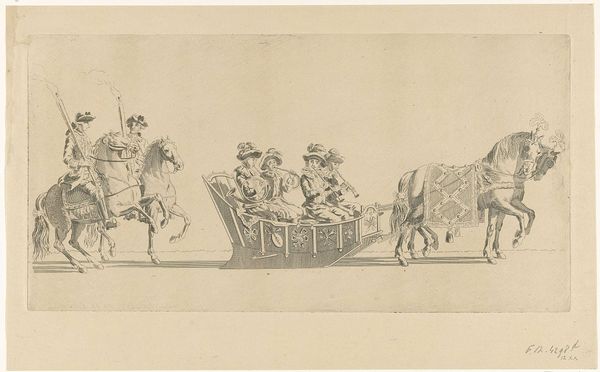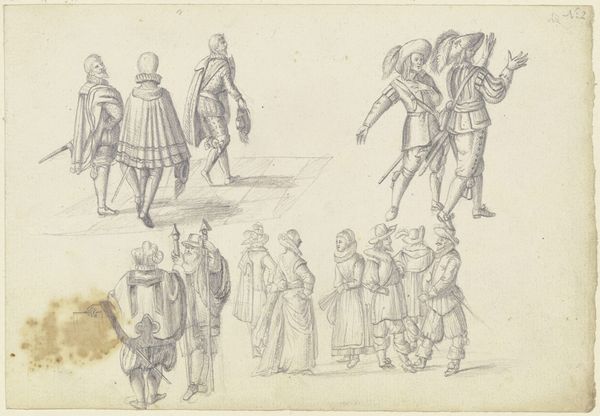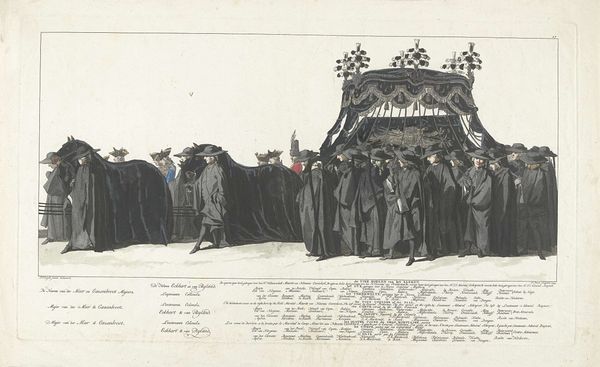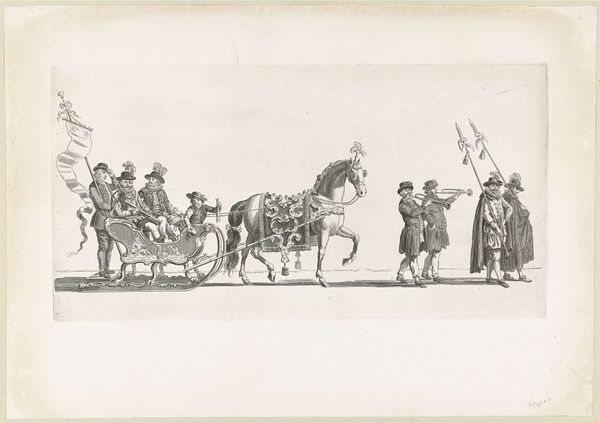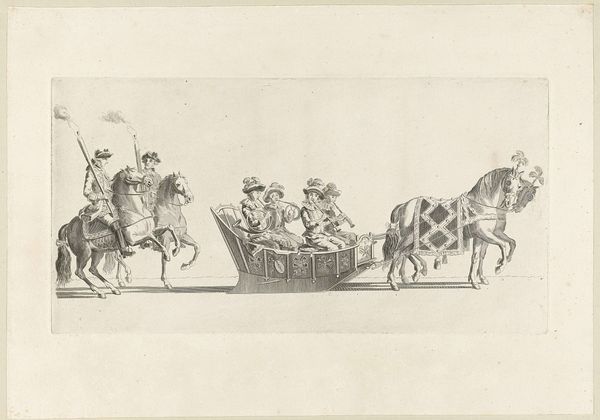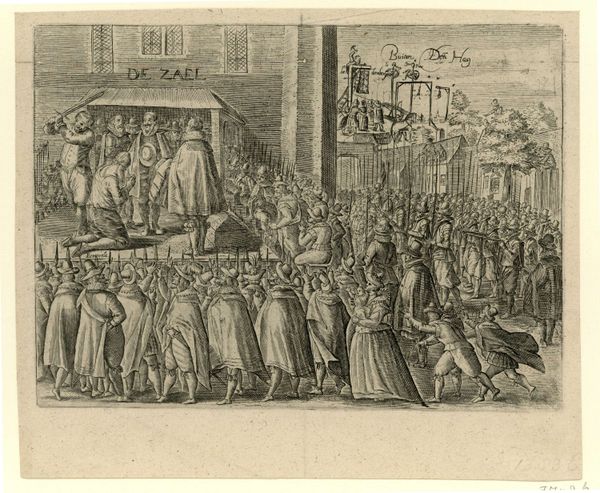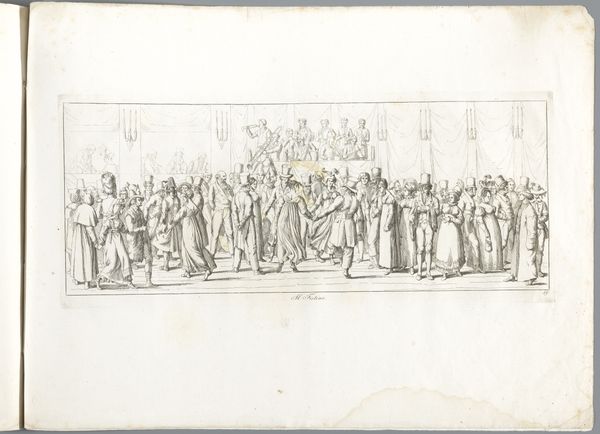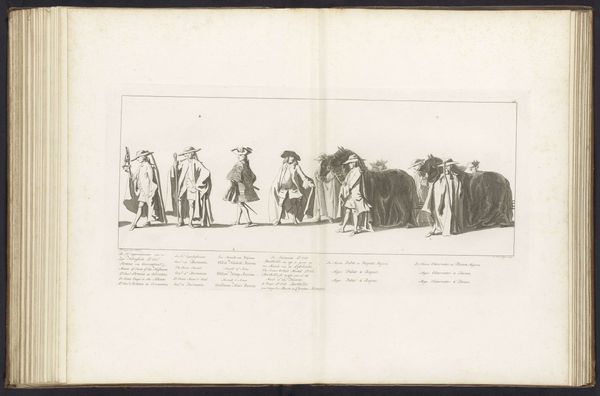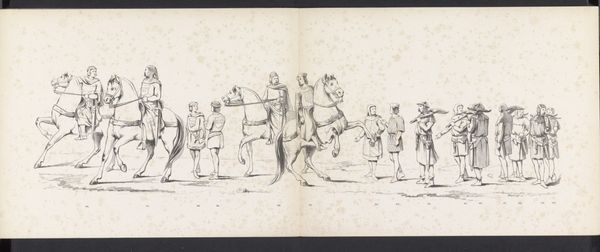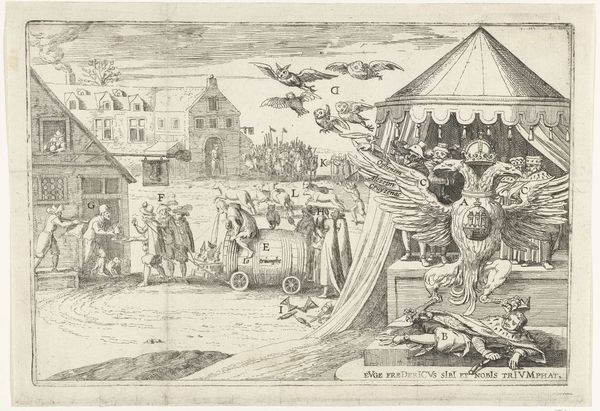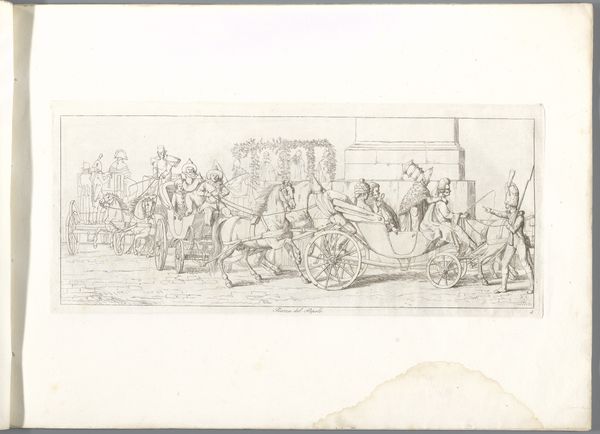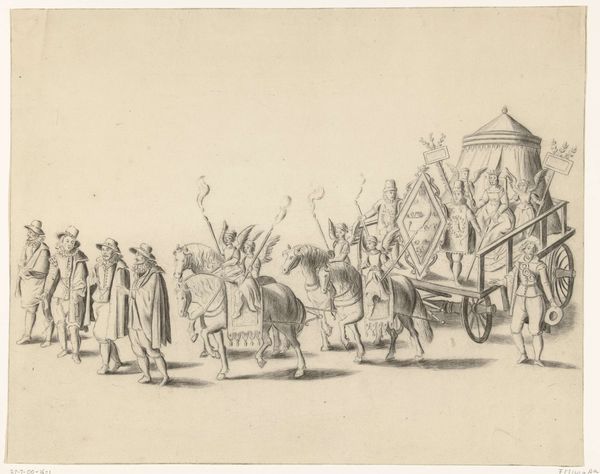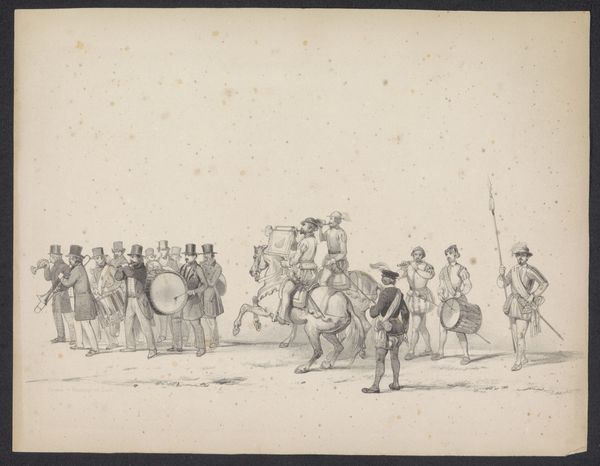
Dimensions: height 140 mm, width 365 mm
Copyright: Rijks Museum: Open Domain
Curator: This is an 1865 drawing titled “Begrafenisstoet van Anna Paulowna (blad 8)”, or “Funeral Procession of Anna Paulowna (page 8)”. Editor: There’s a subdued solemnity in the graphite rendering. The texture feels almost dreamlike—especially the inverted reflection above. Curator: It is one page from a sketchbook and it’s interesting to consider what its intended audience may have felt and understood about these symbols. For instance, the extravagant hearse under its baldachin. It conveys much about power and death in nineteenth-century Europe. Editor: Absolutely. The death of royalty always plays a complex role, becoming a public event laden with politics and deeply coded displays of national identity. Even the capes of the mourners signify the weight of expectation and the structured hierarchy that permeates this world. Curator: Look closely at the faces of the figures. Each is individually rendered, reflecting, perhaps, a realistic accounting of grief but it also reveals a uniformity to the expectations of mourning in a highly stylized fashion. Editor: Exactly. We see the individual absorbed into the collective. I’m thinking about the carriages. Even upside down, they speak to the closed nature of elite circles, set apart by the black cloth that shields the occupant inside. Did this formality really reflect feelings about equality or hide anxieties about social upheaval? Curator: It certainly invites us to reconsider narratives of collective mourning and its uses, doesn't it? Death rituals often tell us more about those who remain than those who have departed. It also reminds me of the collective understanding of symbolism. Those skull emblems… a potent and instantly recognisable message. Editor: True, although our understanding is complicated by history itself. But maybe, in facing death so formally and publicly, they were really grappling with broader questions of legacy and power. This drawing then becomes more than a record of death; it becomes a commentary on life, rank, and enduring symbols. Curator: Ultimately, viewing it encourages us to ask who determines history, whose memories are honored and, frankly, the cost to those who were kept outside this visual narrative. Editor: It’s remarkable how much a simple drawing can unveil about a specific time while reflecting broader societal forces that still echo today.
Comments
No comments
Be the first to comment and join the conversation on the ultimate creative platform.
